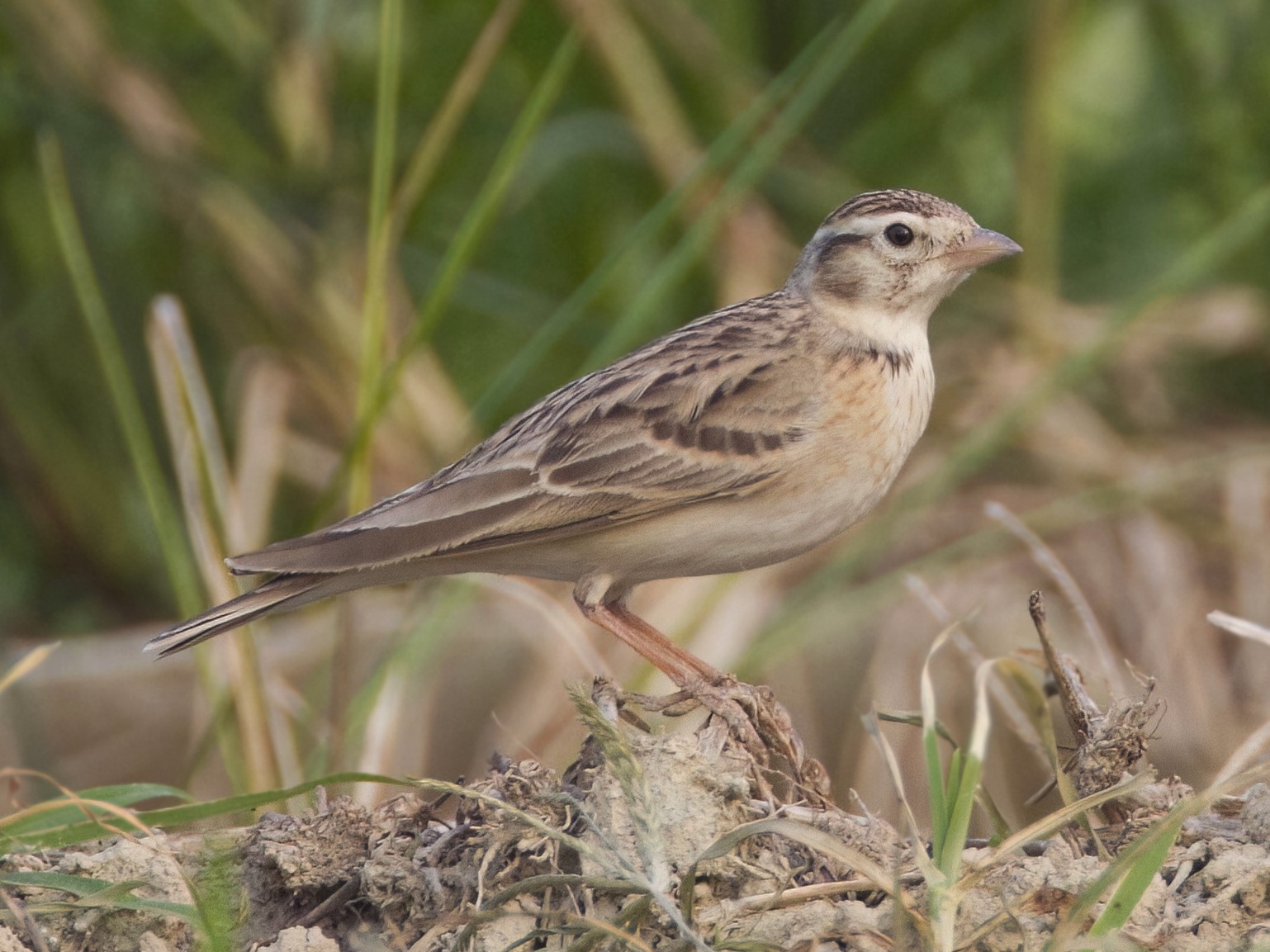Mongolian Short-toed Lark Calandrella dukhunensis 蒙古短趾百靈
Category I. Accidental.
IDENTIFICATION

Apr. 2017, KWOK Tsz Ki.
14-15 cm. Smaller than both Oriental and Eurasian Skylark. Rather plain underparts that are washed buff. Upperparts dark brown with buff pale buff fringes. Supercilium broad and pale.
Differs from Greater Short-toed Lark C. b. longipennis by usually unstreaked forecrown, darker upperparts but little streaking on uppertail coverts (del Hoyo et al. 2020) and by more heavily streaked and rufescent upperparts and brighter rufous-buff breast sides (Rasmussen and Anderton 2005).

Oct. 2014, Koel Ko.
The sparse chest streaking is often confined to the sides, and there are usually blackish patches at the junction of sides to chest and neck. There are two broad though subtle wing bars. Crown slightly darker than upperparts and thus appears capped.
VOCALISATIONS
According to Rasmussen and Anderton (2005) these include a “soft, fast bouncing series ‘heu-du-du-du’…a soft ‘heu’ and a ‘soft, nasal, slightly harsh ‘trup’ or ‘trep’”. The latter differs from the typical flight call of Eurasian Skylark in being more emphatic and harsher.
OCCURRENCE
There are three records of this species for which the photographs provided indicate this species based on the identification criteria above. These are:
2012: one at Long Valley on 31 March.
2014: one at Long Valley on 15 October.
2017: one at San Tin during 23-24 April.
There is one record for which the photographs provided do not allow Greater Short-toed Lark C. b. longipennis to be excluded. However, given that the latter appears to only breed in China in Xinjiang and winters to the southwest, it is considered likely to be this species.
1982: one at Nim Wan on 12 October.
BEHAVIOUR, FORAGING & DIET
No observations.
RANGE & SYSTEMATICS
Monotypic. Breeds in west, north central and northeast China, central and east Mongolia and Transbaikalia. Winters in south and east Asia. In China it breeds from Tibet through Sichuan, Ningxia, Shanxi and eastern Nei Mongol to Heilongjiang; it has been recorded on the Hebei coast on migration (P. Alström in litt.) and in eastern coastal areas in the winter (Liu and Chen 2020).
CONSERVATION STATUS
IUCN: Least Concern. Population trend unknown.
del Hoyo, J., N. Collar, and G. M. Kirwan (2020). Sykes's Short-toed Lark (Calandrella dukhunensis), version 1.0. In Birds of the World (J. del Hoyo, A. Elliott, J. Sargatal, D. A. Christie, and E. de Juana, Editors). Cornell Lab of Ornithology, Ithaca, NY, USA. https://doi.org/10.2173/bow.sstlar4.01.
Liu, Y. and Y. H. Chen (eds) (2020). The CNG Field Guide to the Birds of China (in Chinese). Hunan Science and Technology Publication House.
Rasmussen, P. C. and J. C. Anderton (2005). Birds of South Asia. The Ripley Guide. Vols. 1 and 2. Smithsonian Institution and Lynx Edicions, Washing D.C. and Barcelona.

